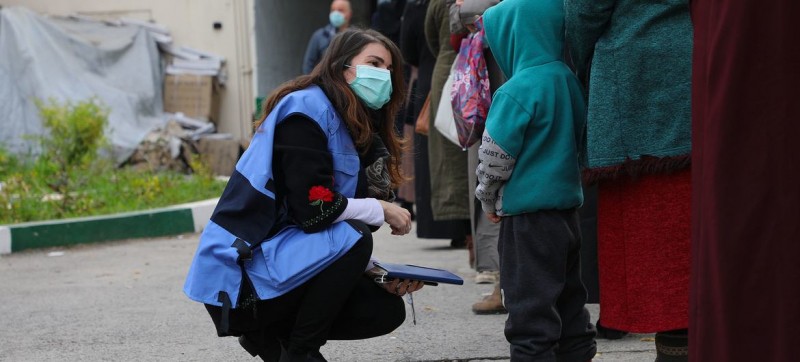An OCHA protection officer speaks to vulneratble people in Damascus, Syria. The hundreds of thousands of aid workers globally who dedicate their lives to assist people in need represent “the best in humanity”, UN Secretary-General António Guterres said in his video message to mark World Humanitarian Day on Friday. “Far from the spotlight and out of the headlines, humanitarians work around the clock to make our world a better place,” he said.
Montaha is a #humanitarian. She is passionate about her work – helping make mobility aid chairs to support people with mobility issues. #ItTakesAVillage #Syria #WorldHumanitarianDay pic.twitter.com/DQSIWyMIw2
— OCHA Syria (@OCHA_Syria) August 18, 2022
“Against incredible odds, often at great personal risk, they ease suffering in some of the most dangerous circumstances imaginable.”
‘It takes a village’
World Humanitarian Day is observed annually on 19 August. It was designated by the UN General Assembly in 2008 to commemorate the anniversary of the 2003 bombing of the UN headquarters in Baghdad, Iraq, which killed 22 aid workers.
This year’s theme – It takes a village – highlights the fact that whenever and wherever people are in crisis, there are others who will help them.
“This village includes affected people who are always first to respond when disasters strike — neighbours helping neighbours. It includes a global community pulling together to support them as they recover and rebuild,” the UN chief said.
“And it includes hundreds of thousands of individual humanitarians — volunteers and professionals alike. Delivering health care and education. Food and water. Shelter and protection. Help and hope”.
Record-high needs
The number of people who need humanitarian assistance has never been higher, due to conflicts, climate change, the COVID-19 pandemic, poverty, hunger and unprecedented levels of displacement.
World Humanitarian Day is an opportunity to celebrate humanitarians everywhere, said Mr. Guterres.
“We salute their dedication and courage, and pay tribute to those who lost their lives in pursuit of this noble cause. They represent the best of humanity.”

An IOM officer provides basic health services at a school hosting victims of gang violence in Port-au-Prince, Haiti.
Solidarity and appreciation
As part of the commemorations, the UN humanitarian affairs office, OCHA, launched a week-long social media campaign, #ItTakesAVillage, for the public to show solidarity with people who need aid, and appreciation for those who work to deliver it.
Humanitarians include teachers, who serve as a lifeline for children caught in crisis. They help boys and girls to continue learning so they do not lose out on their future.
Teachers also offer psychosocial support, especially to girls, children with disabilities, and youngsters who have been displaced, such as migrants and refugees, or those uprooted within their own countries.
OCHA reported that last year, nearly 110 million children in emergency settings were able to access formal or non-formal education, including early learning.
Women and girls first
Meanwhile, the UN Population Fund (UNFPA) is working to make sure emergency response prioritizes women and girls’ needs, rights and dignity.
This year, the agency aims to reach 54.5 million women, girls and young people affected by crisis with lifesaving sexual and reproductive healthcare, information and supplies, among other services.
People like Shakila Parvin, a UNFPA-trained midwife serving Rohingya refugees in camps in Cox’s Bazar, Bangladesh, are the backbone of its humanitarian work.
She has provided obstetric care so that mothers can deliver their babies safely, even in the midst of major flooding brought on by monsoon rains.
“By ensuring these services I can contribute to reducing maternal and child mortality rates, which is one of the most fulfilling parts of my job,” Ms. Parvin said recently. “When I see a mother’s happiness at her healthy baby, my life feels meaningful.”




Comments are closed.